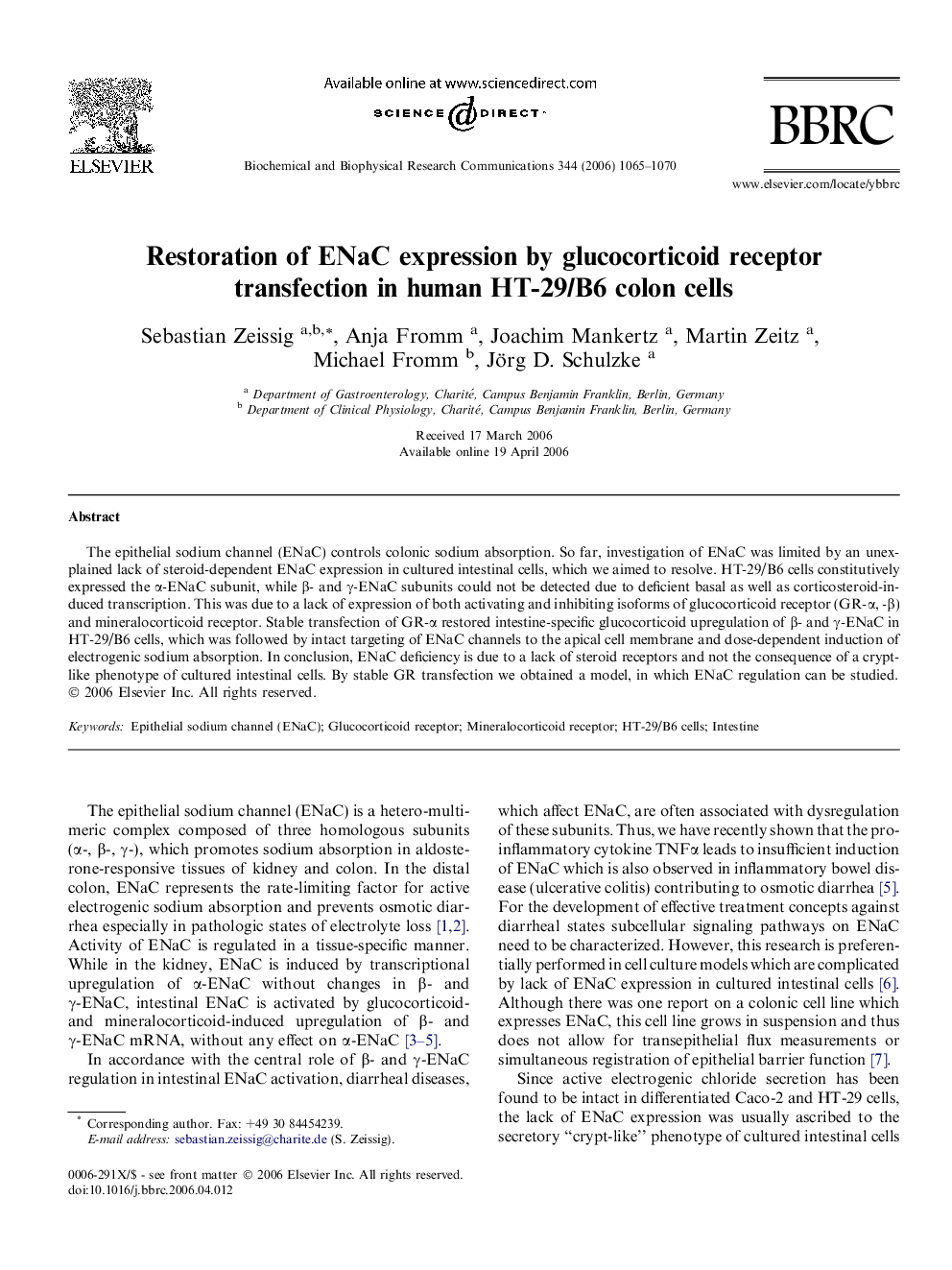| Article ID | Journal | Published Year | Pages | File Type |
|---|---|---|---|---|
| 1940569 | Biochemical and Biophysical Research Communications | 2006 | 6 Pages |
The epithelial sodium channel (ENaC) controls colonic sodium absorption. So far, investigation of ENaC was limited by an unexplained lack of steroid-dependent ENaC expression in cultured intestinal cells, which we aimed to resolve. HT-29/B6 cells constitutively expressed the α-ENaC subunit, while β- and γ-ENaC subunits could not be detected due to deficient basal as well as corticosteroid-induced transcription. This was due to a lack of expression of both activating and inhibiting isoforms of glucocorticoid receptor (GR-α, -β) and mineralocorticoid receptor. Stable transfection of GR-α restored intestine-specific glucocorticoid upregulation of β- and γ-ENaC in HT-29/B6 cells, which was followed by intact targeting of ENaC channels to the apical cell membrane and dose-dependent induction of electrogenic sodium absorption. In conclusion, ENaC deficiency is due to a lack of steroid receptors and not the consequence of a crypt-like phenotype of cultured intestinal cells. By stable GR transfection we obtained a model, in which ENaC regulation can be studied.
